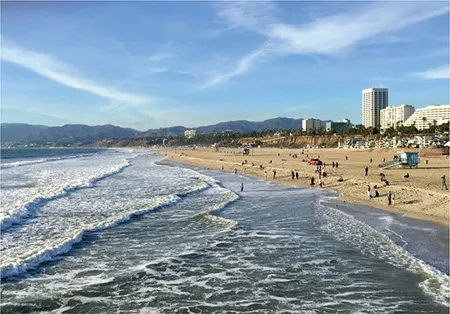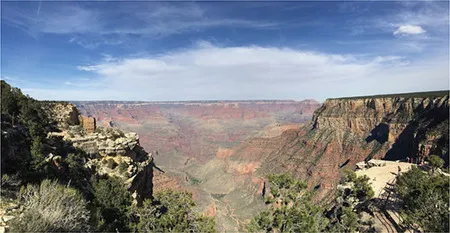As you develop your knowledge about tourism, you will notice that it is a dynamic sector that is often strongly influenced by changes that take place in society – tourism is very much a part of how we live today. It is important to remember that tourism as an activity, as an economic sector and as an area of study, cannot be separated from the wider external environment within which it operates. Tourism is influenced by external issues that have a significant impact on the nature of its development, on the ability of tourism businesses to operate successfully, and on tourism’s potential to benefit or damage destinations. Throughout this book, we consider tourism in the context of contemporary forces that shape the economy and operating environment in general and to which successful tourism enterprises and destinations must be able to adapt and respond effectively. Three of these forces are of particular importance for tourism, and make their influence felt in every chapter of this book: globalisation and global conflict; sustainability and climate change; and developments in information and communications technology (ICT). In the remainder of this chapter, we explain the context of contemporary tourism in regard to these forces.
Globalisation and global conflict
Globalisation, at its simplest, means crossing borders. Globalisation is not new: goods, people and ideas have traversed the globe for millennia. In recent times however, globalisation has increased at a rapid pace: new technologies, like jet planes and the Internet, have led to global economics, politics and communications (Economist, 2001: ix). Wahab and Cooper (2001: 4) say globalisation is ‘an all-encompassing term that denotes a world which, due to many politico-economic, technological and informational advancements and developments, is on its way to becoming borderless and an interdependent whole.’ This means that any occurrence anywhere in the world can, in one way or another, have an impact somewhere else: in another country, in another continent. If for example the cotton crop in India is devastated by floods or a pest, this could mean that clothing prices may go up in North America. Political conflicts in Russia, a major exporter of natural gas, can lead to higher gas prices in Europe. Globalisation describes the process by which events, decisions and activities in one part of the world come to have significant outcomes for communities and individuals in quite distant parts of the globe.
SpongeBob SquarePants advertisement in Iran
Source: Lynn Minnaert
Because it has become easier for goods, ideas and people to cross borders, certain products and cultural phenomena are now readily available almost everywhere. Brands like Coca-Cola, McDonald’s and Nike are sold almost everywhere in the world, and popular music and Hollywood films can reach worldwide audiences via global distribution and the Internet. Globalisation has also led to multicultural communities, where a range of cultures co-exist and come together (Micklethwait and Wooldridge, 2004). Even though there are still cultural differences between the regions of the world, there is a growing body of products and phenomena that these regions have in common – Beynon and Dunkerley (2000) argue that this marks the emergence of a new ‘world culture’.
Albrow (2004) summarises that globalisation can be seen as a combination of four phenomena:
- The values and daily behaviour of many groups in contemporary society are influenced by the state of other parts of the world, and its inhabitants.
- Images, information and products from any part of the world can be available anywhere and anytime for ever-increasing numbers of people worldwide.
- Information and communication technology make it possible to maintain social relationships and direct communication with people all over the globe, across time and distance.
- International laws and agreements ensure that people can move across national boundaries with the confidence that they can maintain their lifestyles and their life routines wherever they are.
Although there may be benefits attached to globalisation, such as the opportunities for communication between people in different parts of the world and the sharing of information, there are also those who claim that globalisation has a series of disadvantages. Examples are that globalisation reduces the power of national governments; that it reduces cultural differences and fades national identities; that it is a source of environmental degradation; and that it increases the gap between rich and poor.
Ronald McDonald figure in Bangkok, in typically Thai pose
Source: Lynn Minnaert
Tourism can be seen as part of the process of globalisation – it is a sector with globalised supply and demand, and it is also a social phenomenon that can influence communities around the world. Many tourism suppliers, such as hotel chains and tour operators, have expanded across borders – tourists can, for example, stay in Hilton hotels in destinations ranging from Japan to Jamaica, confident that the level of service and comfort will be the same across the globe. In developing countries, foreign-owned tourism companies may reap the economic benefits from tourism; many people in the host communities, however, are often excluded from the profits tourism can bring. Globalisation has also resulted in a growth in international tourism demand: cross-border travel is on the increase and continental and intercontinental travel is growing fast (OECD, 2008b: 12). Visitors have an increasing number of destinations to choose from – they can find out about them via ‘a globalised world of communications and advertising’ (Macleod, 2004) and travel to them via extensive transport routes. This has led to an intense competition between destinations, and pressure on certain destinations as they suffer from an excess of visitors.
While a global sector like tourism may seem to benefit from globalisation, it is heavily dependent on political stability in the destination. Bianchi (2006: 64) states that
[i]nternational tourism represents the apotheosis of consumer capitalism and Western modernity, based on an apparently seamless harmony between the free movement of people, merchandise and capital. However, as the growing insecurities engendered by the globalisation of terrorism and military interventionism, as well as targeted attacks on foreign tourists in certain parts of the world illustrate, the liberal calculus of unhindered mobility, political stability and the unfettered expansion of the market, which underpins the ‘right’ to travel, is increasingly mediated by heightened concerns of risk and security.
Geopolitical conflict and terrorism have affected many destinations in recent years, and it is not uncommon for tourists to be the specific target of attacks. In 2015, Tunisia was rocked by two attacks: one in the Bardo National Museum in Tunis, killing 22 tourists; and one three months later, at a beach resort near Sousse, killing 38 tourists. In 2016, a MetroJet flight from Sharm-El-Sheikh, Egypt, to St Petersburg, Russia, was downed by ISIS, killing all 224 passengers and crew on board. That same year, two bombs were detonated in Brussels Airport, Belgium, claiming 16 lives. Additional attacks in Nice, Istanbul, Paris, London and other destinations have had a profound impact on the tourism sector, and safety and security play an ever more important role in destination development and management.
The globalisation of tourism affects the different aspects of tourism that are discussed in this book. The characteristics of global tourism demand and supply will be discussed in Chapters 3, 5, 6 and 12. Globalised tourism also has far-reaching economic, socio-cultural and environmental impacts on host communities: these will be discussed in Chapters 8, 9 and 10. The potential to reach a global market has brought about changes in the way many companies market themselves (Chapter 13). Finally, crisis management for destinations will be covered in Chapter 12.




